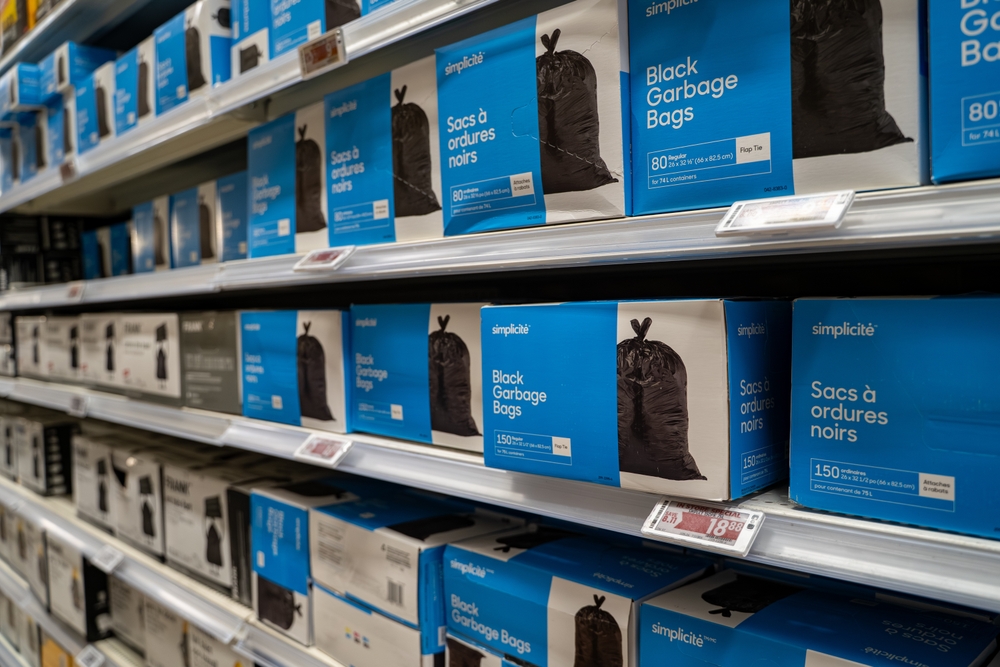When people think of groundbreaking inventions, they often credit Silicon Valley, New York, or some dusty American garage. But north of the border, Canada has quietly produced some of the world’s most important innovations, spanning medicine, technology, entertainment, and even your morning breakfast. Here are 18 things Americans don’t realize were invented in Canada.
Insulin

In 1921, Dr. Frederick Banting and Charles Best at the University of Toronto discovered insulin, transforming diabetes from a fatal disease into a manageable condition. Before insulin therapy, a diabetes diagnosis often meant certain death. Their work, refined with biochemist James Collip, led to the first successful treatment in 1922. Millions around the world have since benefited, and insulin remains one of the most significant medical breakthroughs in history. The discovery earned Banting and his colleague J.J.R. Macleod the Nobel Prize in Medicine in 1923, though Banting shared his recognition (and prize money) with Best to honor their joint effort.
The Telephone

Although Alexander Graham Bell later became a U.S. citizen, his groundbreaking invention of the telephone happened in Brantford, Ontario, in 1874. It was there that he first conceived the idea of transmitting voice through electrical wires, leading to his patent in 1876. Bell tested his prototypes in his Canadian workshop before demonstrating them publicly in Boston. The device revolutionized communication, shrinking distances in ways once unimaginable. While the U.S. often claims Bell as its own, his Canadian roots were central to his success; the first transmission of intelligible speech took place in his family’s Canadian home laboratory.
The Snowmobile

Joseph-Armand Bombardier, a Quebec mechanic, developed the first practical snowmobile in 1937 after struggling to travel through deep snow in rural Canada. His invention combined treads and skis to glide over snow with ease. Originally meant for doctors, mail carriers, and priests in isolated villages, it soon became a recreational icon. Bombardier’s design laid the foundation for the modern snowmobile industry, inspiring his namesake company, Bombardier Inc., which later grew into a transportation giant. The snowmobile not only redefined winter mobility but also fueled tourism and outdoor recreation across northern regions worldwide.
The Zipper

The everyday zipper owes much of its success to Canadian engineer Gideon Sundback, who perfected the “Separable Fastener” in 1913. While earlier versions existed, Sundback’s improved design, featuring interlocking metal teeth, made the zipper reliable and easy to use. His innovation replaced cumbersome buttons and hooks, changing fashion and manufacturing forever. First used on boots and tobacco pouches, zippers quickly found their way into clothing, luggage, and even space suits. Sundback’s work at the Universal Fastener Company in St. Catharines, Ontario, turned a clever idea into one of the most practical tools of modern life.
Basketball

In 1891, physical education instructor James Naismith, a Canadian from Almonte, Ontario, invented basketball while teaching in Springfield, Massachusetts. Tasked with creating an indoor winter sport, he nailed peach baskets to a gym balcony and used a soccer ball. What began as a simple way to keep students active evolved into one of the world’s most popular sports. Though it became an American cultural staple, its creator proudly credited his Canadian upbringing for inspiring teamwork and fairness in the game’s design. Today, the NBA celebrates Naismith’s contribution through the Basketball Hall of Fame in Springfield.
The Electric Wheelchair

Engineer George Klein, working for Canada’s National Research Council in the 1950s, developed the first electric wheelchair for injured World War II veterans. His design restored independence and mobility to thousands of individuals who could no longer use manual chairs effectively. Klein’s version featured a joystick control system—technology that later influenced video game controllers and robotic arms. His contribution extended beyond comfort; it fundamentally changed rehabilitation and accessibility standards worldwide. Klein’s humanitarian approach made mobility a right, not a privilege, setting a foundation for modern assistive technologies.
Peanut Butter

While the U.S. often associates peanut butter with childhood nostalgia, the first patent for a peanut paste was granted to Montreal-based chemist Marcellus Gilmore Edson in 1884. His process involved grinding roasted peanuts into a smooth, nutritious paste intended for people who had difficulty chewing solid food. Decades later, American inventors commercialized and sweetened the recipe, but Edson’s version marked the beginning of the spread’s evolution. His invention offered both nutrition and convenience long before it became a sandwich staple. Without his early innovation, the beloved peanut butter and jelly sandwich might never have existed.
The Pacemaker

In 1950, Canadian electrical engineer John Hopps invented the first external artificial pacemaker while studying hypothermia treatments. His research revealed that electrical pulses could restart a stopped heart, leading to the development of a portable pacemaker powered by vacuum tubes. Though bulky by modern standards, it laid the groundwork for the compact versions used today. Hopps’ discovery saved countless lives and reshaped cardiac medicine, proving that mechanical intervention could mimic natural heart rhythms.
The Paint Roller

In 1940, Norman Breakey, a Toronto-based painter, revolutionized home renovation with his invention of the paint roller. Before his design, painting required brushes and hours of manual labor. Breakey’s roller evenly distributed paint on walls, cutting application time dramatically. Despite the invention’s practicality, he struggled to patent and mass-produce it, allowing others to profit later. Nonetheless, his idea remains one of the most widely used tools in home improvement history. Every modern painter, whether DIY or professional, owes a nod to Breakey’s simple yet ingenious design.
Instant Replay

Television producer George Retzlaff introduced the concept of instant replay during a 1955 hockey broadcast for CBC’s “Hockey Night in Canada.” Using kinescope recordings, he replayed a goal moments after it happened, something viewers had never seen before. The innovation transformed sports broadcasting, allowing fans to relive key moments in real-time. Retzlaff’s experiment became a staple in television production, influencing networks worldwide. From the Super Bowl to the Olympics, instant replay is now an integral part of sports culture, all thanks to one Canadian broadcaster’s clever use of emerging technology.
The Walkie-Talkie

Donald L. Hings, a Canadian inventor and engineer, created the first portable two-way radio in 1937. Initially designed for mining and wilderness communication, it gained massive importance during World War II. The Canadian military dubbed it the “walkie-talkie,” and soldiers relied on it for battlefield coordination. Hings’ design laid the foundation for modern communication devices, influencing everything from mobile phones to Bluetooth headsets. His work demonstrated the power of compact wireless technology long before consumer electronics adopted it. Today, his invention remains synonymous with reliability in emergency and tactical operations.
The Garbage Bag

In 1950, Winnipeg inventors Harry Wasylyk and Larry Hansen created the world’s first disposable green plastic garbage bags. Originally developed for hospital sanitation, their product was soon licensed to Union Carbide and marketed to households under the brand name Glad. The innovation provided a cleaner, more efficient way to manage waste, transforming urban sanitation practices. What began as a simple idea to contain messes became a global household staple. The humble garbage bag remains one of the most practical and widely used Canadian inventions worldwide.
IMAX Technology

The immersive cinematic experience of IMAX was developed by a team of Canadian filmmakers, Graeme Ferguson, Roman Kroitor, and Robert Kerr, in 1967. Their goal was to create larger, clearer, and more engaging visuals for audiences. First showcased at Expo ’70 in Osaka, Japan, IMAX set new standards for film projection. The technology later expanded to theaters globally, offering ultra-high-resolution images and breathtaking sound. From documentaries to Hollywood blockbusters, IMAX transformed how people experience cinema, proving that Canada played a central role in shaping modern film innovation.
The Java Programming Language (Partly)

James Gosling, a Canadian computer scientist from Calgary, created Java in 1995 while working for Sun Microsystems. Designed for portability and efficiency, Java became one of the most widely used programming languages in the world. It powers everything from mobile apps to banking systems and even the Android operating system. Gosling’s design philosophy, “write once, run anywhere”, revolutionized software development, enabling seamless cross-platform compatibility. Though developed in California, Java’s mastermind proudly hails from Canada, giving the country an indirect but crucial role in shaping the digital world.
The Robotic Arm for Space (Canadarm)

In 1981, Canada contributed a major innovation to NASA’s Space Shuttle Program: the Canadarm. Built by Spar Aerospace, it was a robotic arm used for satellite deployment, repair, and maintenance. Its precision and reliability made it an essential tool in space exploration. Later versions, including Canadarm2, were installed on the International Space Station, where they remain vital for assembly and cargo handling. The technology not only advanced robotics but also cemented Canada’s role as a key player in space innovation. Its success inspired similar systems used in surgical robotics today.
The Pager

Invented in 1949 by Canadian Alfred J. Gross, the pager revolutionized wireless communication decades before smartphones existed. Gross, who also helped pioneer two-way radios, designed the pager to alert individuals via radio signals. Hospitals were among the first to adopt it, as doctors could be reached instantly without being tethered to a phone. The pager became a global icon of the late 20th century, especially in business and healthcare. Though mostly obsolete now, its concept paved the way for SMS messaging and mobile notifications.
The Electron Microscope

Ernst Ruska often receives credit for the electron microscope, but Canadian physicist James Hillier built one of the first practical models in 1938 while at the University of Toronto. Hillier’s design allowed scientists to view objects at magnifications impossible with optical microscopes. His work contributed to major advances in biology, materials science, and medicine. The instrument opened an entirely new dimension of research, helping identify viruses and analyze atomic structures. Hillier’s contribution remains a cornerstone in scientific imaging, reflecting Canada’s quiet yet powerful presence in global innovation.
The Paintball Game

In 1979, Canadian inventors Hayes Noel and Charles Gaines created the concept of paintball using modified forestry marking guns. What began as a way to simulate hunting quickly evolved into a competitive sport emphasizing strategy and teamwork. Paintball’s popularity exploded in the 1980s, spawning global tournaments and commercial arenas. The original Canadian idea of safe, non-lethal mock combat became a multimillion-dollar industry, blending recreation, adrenaline, and technology. Its enduring appeal demonstrates how even a casual idea can spark an entire cultural phenomenon.
21 Products Canadians Should Stockpile Before Tariffs Hit

If trade tensions escalate between Canada and the U.S., everyday essentials can suddenly disappear or skyrocket in price. Products like pantry basics and tech must-haves that depend on are deeply tied to cross-border supply chains and are likely to face various kinds of disruptions
21 Products Canadians Should Stockpile Before Tariffs Hit